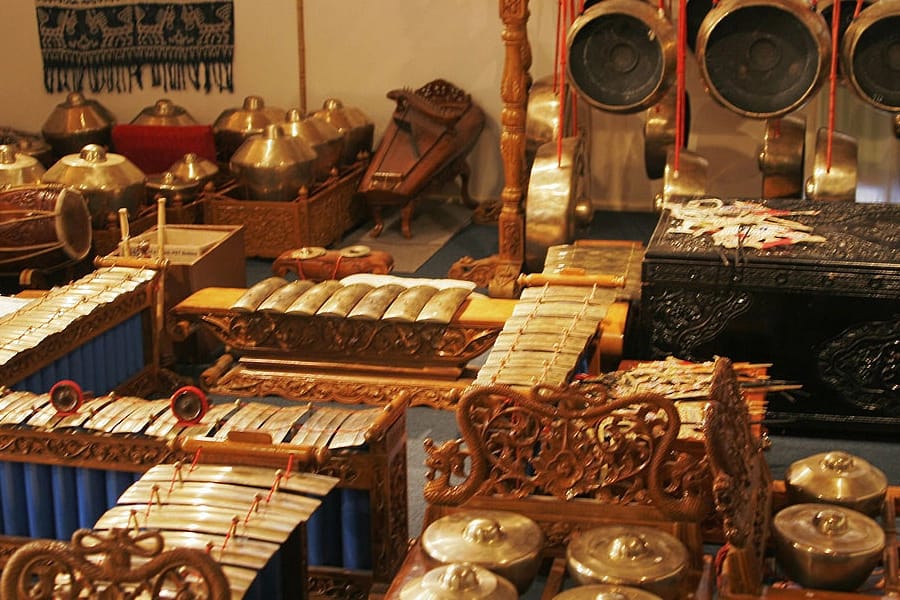
On an A-to-Z edition of “The State of the Arts”, it’s three 3 “G” instruments that are slightly off the beaten track – Gamba, Gamelan and Glass Harmonica. Early music fans know the viola da gamba: played between the legs (gamba is Italian for ‘leg’) like a cello, it differs by having frets on the fingerboard, more strings, and a different shape, including a broader neck. It was especially popular in England, where it was known as a ‘bass viol’ – and where it was fairly common to find matched sets of instruments, or ‘consorts of viols’ that could be taken out to provide ready entertainment for company.
Gamelan is really a shorthand to describe a gamelan ensemble, a group of traditional Indonesian instruments, played by multiple players, consisting of gongs, metallophones and drums. The exotic sounds and scales, along with their complicated cyclical patterns appealed to Western composers such as Debussy and Satie, when they first heard the music, at the Paris Exposition of 1889. Bay Area composer Lou Harrison is among the best known composers of recent times to write for an American variant of the gamelan. Here’s an idea of what a traditional gamelan ensemble looks and sounds like:
Finally, the glass harmonica or armonica, the name Ben Franklin gave his invention, is a more practical arrangement for allowing a player to rub moistened fingers along the edges of tuned glasses or in this case, bowls of fine crystal. Here, you can see a glass harmonica player in action:







